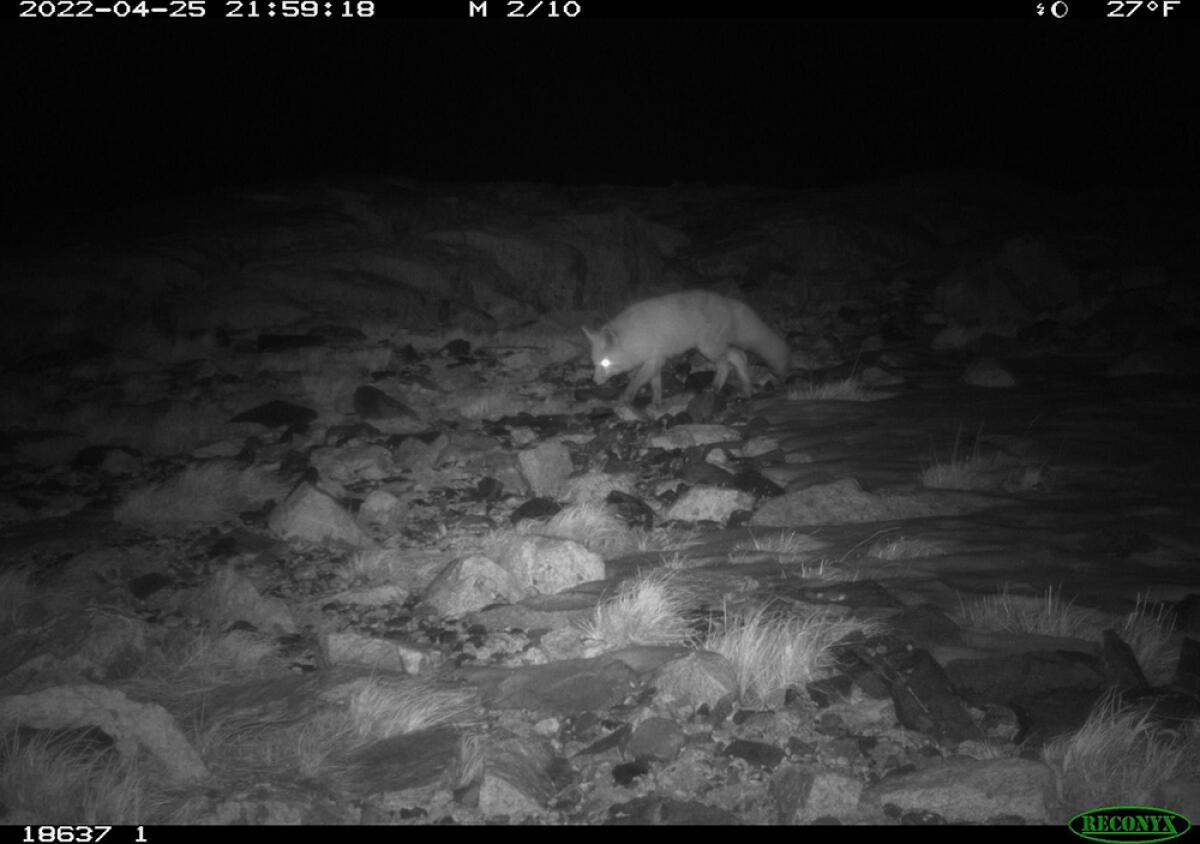Threatened red fox pops up south of Yosemite, increasing species’ survival chances

- Share via
The sleek and tenacious Sierra Nevada red fox — once thought to have disappeared from the mountain range that bears its name — has been detected near the eastern boundary of Sequoia and Kings Canyon national parks.
The discovery by scientists from the California Department of Fish and Wildlife gives them hope that the population of the small carnivore could be expanding, or at least occupying a broader range than previously believed, increasing the fox’s chance of survival.
“It’s really exciting to find not only that they’re still here, but that they’re in many more places than we initially thought they were,” said Julia Lawson, an environmental scientist with the California Department of Fish and Wildlife.
The state agency detected the creatures on four occasions with three survey cameras near Taboose Pass, east of the John Muir Trail, between 11,400 and 12,000 feet of elevation. The sightings happened between April and June of last year, extending the known range of the animals by more than 100 miles to the south.
At 8 pounds, the fox is not much larger than a house cat. Its extraordinary hearing enables it to find small rodents, even when the prey is covered by a layer of snow. The fox’s coat ranges in color from red to granite, with fluffy fur once prized by trappers, who would sell the pelts to be made into coats and stoles.
Hunting and trapping of the creatures decimated the population to the point that scientists and conservationists believed for much of the 20th century that the species had been eliminated from the Sierra.
Trapping was banned in 1974, and the fox was listed as threatened in California in 1980. In 2021, the federal government listed the Sierra Nevada population as endangered. (A distinct population of foxes in the Cascades continued.)
The discovery of a small population of the foxes at Sonora Pass in 2010 alerted conservationists that the creatures still had a foothold in the Sierra, toward the northern end of Yosemite National Park.
Researchers have been working since then to better understand where the foxes live in hopes of designing a conservation plan to increase their chances of survival.
In 2018, remote cameras detected foxes at six sites within the Mono Creek watershed, southeast of the town of Mammoth Lakes. Researchers collected scat samples, indicating the presence of two females and one male. The samples also helped determine that the male had traveled more than 70 miles south from Sonora Pass to the Mono Creek area.
The California wildlife agency collaborated on the study with the UC Davis Mammalian Ecology and Conservation Unit, the California Department of Water Resources, Southern California Edison and officials in multiple national parks and national forests.
“These new detections are very personally gratifying and are a real payoff for all the hard work our staff has put in,” said Fish and Wildlife biologist Brian Hatfield, lead author on the research. “From a conservation standpoint, this shows that the Sierra Nevada red fox is more widely distributed than previously believed.”
Lawson said that wider distribution “means that they’re more resilient to a catastrophe or disease — something that could wipe out a population in one place. With populations scattered throughout the mountain range, you have a better chance of the species surviving.”
More to Read
Sign up for Essential California
The most important California stories and recommendations in your inbox every morning.
You may occasionally receive promotional content from the Los Angeles Times.











